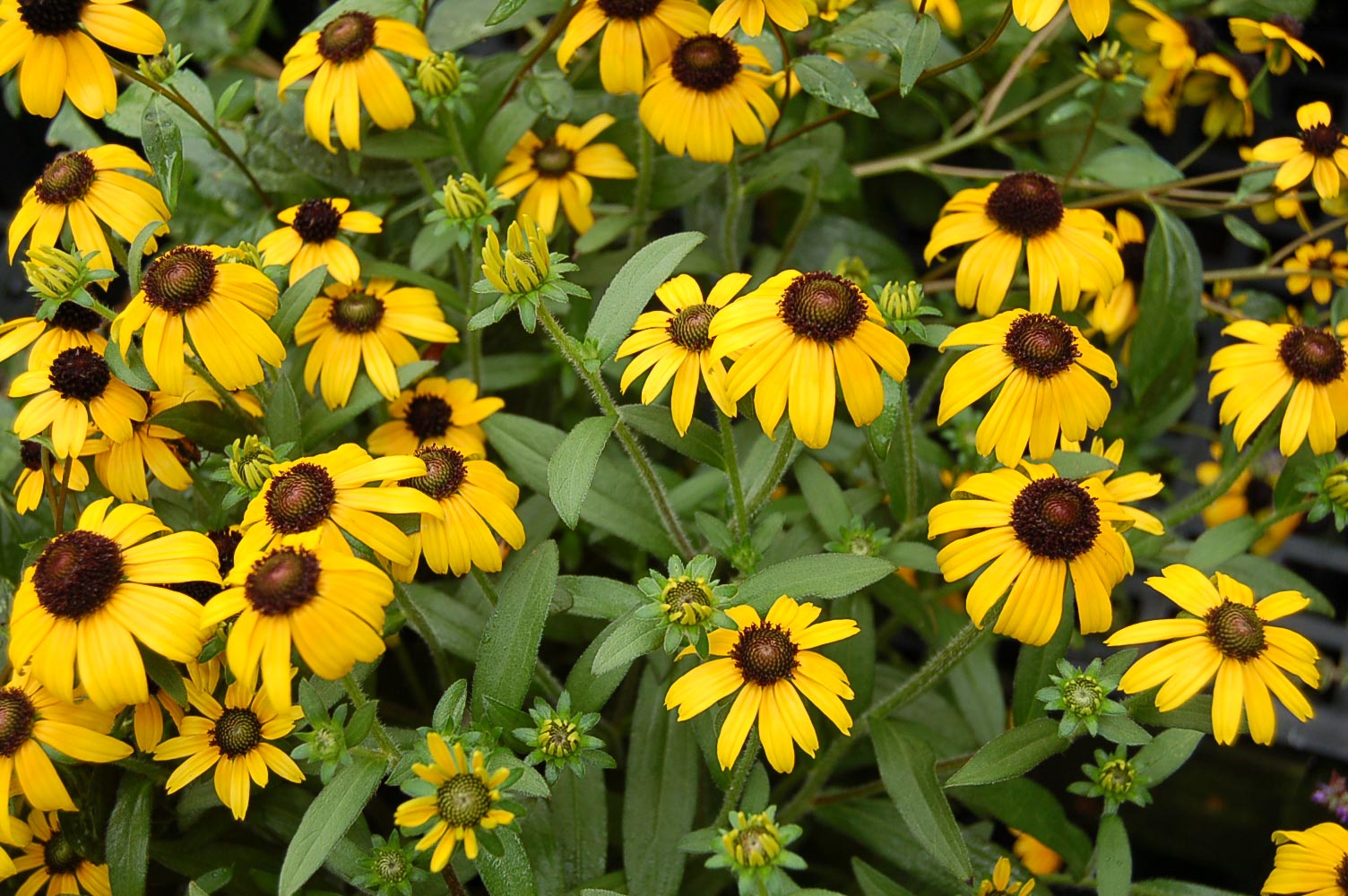Black-eyed Susans are great fall bloomers

THE GOLDEN YELLOW FLOWERS of Rudbekia, or black-eyed Susans, lift your spirits as summer fades to fall. There are about 20 Rudbeckia varieties—some are perennial, some are biennial and others are annual. All of them tolerate a hot and humid summer with ease.
There are subtle differences in flowering height, flower size, flower color and habit with each variety.
Some perennial varieties, from shortest to tallest, are: ‘American Gold Rush,’ 1-1/2–2 feet; ‘Goldstrum,’ 2–3 feet; ‘Little Henry,’ 3–4 feet; and ‘Herbstonne,’ 4–7 feet.
Annual varieties, from shortest to tallest, include ‘Kissing Smileyz,’ 1–1-1/2 feet; ‘Laughing Smileyz,’ 1–1-1/2 feet; and ‘Indian Summer,’ 2–3 feet.
Both annuals and perennials prefer to grow in full sun in average moist soils. Once perennial varieties are established, they are drought resistant. Annual varieties can be grown either in the ground, a window box or a container. Rudbeckia also make excellent cut flowers. Since the flowers are so abundant, you won’t miss them if you cut a few.
If you like attracting butterflies or birds to your garden, this is also a great choice. One of my favorite reasons for having several varieties of Rudbeckia in my garden is to watch the goldfinches pick the seeds out. The stems are stiff and make an excellent feeding perch. Removing the spent flowers encourages reblooming, but I prefer to sacrifice a few flowers and leave them for the birds.
Rudbeckia can be planted singly or in groups and pair wonderfully with other late season bloomers like ornamental grasses, showy sedums, Russian sage, salvias and asters, giving your late season garden a splash of color.

